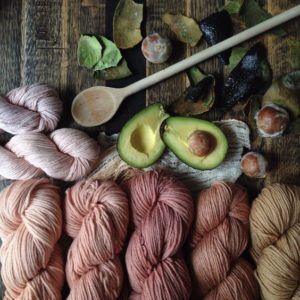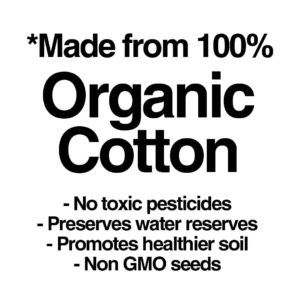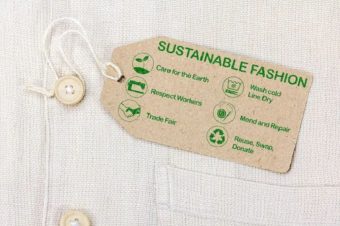Adding eco-friendly clothing fabric to your wardrobe choices can be a great initiative towards keeping the earth green. Organic clothing can save the environment , provide good working conditions and save the health of the people wearing it.In order to earn this prestigious label “organic” there are certain standards that have to be met, the fabric needs to have a natural origin and has to be grown without the application of chemical fertilizers and pesticides, meaning the clothes should be biodegradable and their manufacturers should not contribute to pollution, instead of that, they should use services provided by local and green wholesale t-shirt screen printing companies.
Here are some of the organic fabrics that satisfy most of the guidelines for sustainable fabric production.
Hemp: Hemp is a cannabis plant, rapidly renewable and easy to harvest. Hemp grows quickly with very little water, no chemicals and pesticides, absorbs more carbon from the atmosphere than any other plants for textile production. The fibre of the cannabis plant is extracted from the stem and used to make strong fabrics. Hence can be cultivated cheaply and organically even on marginal lands. Hemp is both soft and durable, offers protection from UV rays and is quite resisted to dirt. It dyes easily and naturally in green, black, grey and brown giving a great luster.Hemp is easier to wash and also provides a texture similar to linen.
Tencel: Tencel is the most environmental friendly regenerated fabric, whose fibres are grown sustainably, using a toxic solvent which can by recovered and continually recycled by 99 percent, making it completely biodegradable. Tencel is made from natural cellulose wood pulp , where fibres are spun into yarns and later woven into textiles. The tencel fabric is soft, absorbent, wrinkle resistant and very strong when wet or dry, it easily flatters the human body and drapes around the body very well.
Organic dyes can be made with natural ingredients like Avocado pits. These yarns above have been dyed with colour extracted from the seed of the Avocado fruit : Image Source.
Alpaca: Alpaca is a native of South American camelid domesticated by Andean people for their wool. Alpacas have given organic farmers a steady source of income. They eat grass and their waste droppings make an amazing rich natural fertiliser. Alpacas produce some of the finest lustrous and silky natural fibres in the world providing farmers with hypo allergenic and warmer wool. Alpaca fleece is a natural fibre, either light or heavy depending on how it is spun. The fabric is easy to sew, extremely durable and long lasting.
Soy: Soy fabric is derived from the leftover or waste of Soy food production industry where the hulls of Soy beans are spun to make a light, silky soft and easy to care for fabric. The fabric is good for our planet as the Soy plant itself is easily renewable and the fibre is biodegradable. The fabric absorbs the dye quickly requiring less dye stuffs. Its excellent absorption qualities allows perspiration to evaporate and also protects you from the sun with its UV resistant qualities. The fabric caresses your body with its natural drape and a bit of stretch.
Organic dyes can be made with fruit extracts as well. Like this fabric dyed with blackberries. the look and finish of an organically dyed fabric is very unique- Image Source
Bamboo: Bamboo is the most popular sustainable and economic friendly fabric choice, and has become a fashionable alternative for firms and consumers looking for a shift into organic and biodegradable clothing. Bamboo fabric is a derivative of plant pulp which is separated into thin threads capable of being spun and woven into soft , translucent and silky clothing. According to Bamboodetective, bamboo grows fast and can be farmed without any pesticides or chemicals making it 100 percent biodegradable. It is a popular sportswear fabric because of its antibacterial, hypoallergenic and absorbent nature that can absorb up to three times its weight in water. This fabric also offers UV protection.
Organic wool: Organic wool is a natural fabric made from fleece of sheep is increasingly becoming available, produced using sustainable farming practices, without toxic sheep dips and where use of synthetic hormones and genetic engineering is prohibited. This organic wool that comes from sheep’s, goats and even angora rabbits is not exposed to chemicals, it is chlorine free, humanely treated and kept in good farm conditions. Organic wool is renewable, flame resistant, durable , warm , moisture absorbent and soft. It has been used in clothing for over 12000 years. It has been infant approved, its hypoallergenic and a versatile natural insulator.
Ramie: Ramie is a natural plant , also known as China grass .Ramie fibre has a ancient history and has been used for thousand of years and have been found in Egyptian pyramids, used for mummy clothes during the period 5000-3000 BC.The ramie fibre is very durable , has a silky lustre and is pure white in color. It is naturally resistant to bacteria, mildew, alkalis, rotting, light and insect attack. It doesn’t shrink and keeps its shape. It is eight times stronger than linen or cotton, absorbent and easily dyed.It can withstand high water temperatures during laundering and it’s lustrous appearance improves with washing. It is often blended with other fibres and lasts longer, giving high yields up to six times a year and this hardy perennial has a crop life from six to twenty years.It is used in apparel and home fashions.
Clothes made from organic fabrics have a distinctly different “natural” look
Image source (Left Image & Right image)
Organic Cotton: Organic cotton is grown with very less water and without any chemical interference during the fabric processing. Seeds that are not genetically modified are used to grow organic cotton. This fabric is much more environment friendly and doesn’t require usage of chemical dyes as cotton naturally comes in a variety of colors like orange , red and white, which helps in avoiding the use of color agents. The production of cotton that we are used to seeing in clothes requires staggering quantities of synthetic agricultural chemical insecticides, pesticides and fertilizers. These chemicals often end up in water and become harmful for the livestock and environment in general.
Organic Linen: Organic Linen refers to linen that is obtained from flax fibres. The flax plants are grown without the use of toxic pesticides and synthetic fertilizers. True linen is originally referred to yarn and fabric made from flax fibres and flax is a natural raw material, making one of the most sustainable textiles. Hence the fields are healthier for farmers, wildlife and surroundings. This fabric is hypoallergenic, has tendencies that protect against sun radiations and continues to feel cool and dry even in hot humid weather. Linen has been into continuous production in the industry since 4000 B.C.E which is an evidence of its sustainability, hence it is also known as the king of pure natural fabrics. Easy to maintain, luxurious and comfortable. Organic Linen can also be found in shades of ivory, ecru, tan or grey.
Labels stating that a garment is made from 100% organic fibre have a premium quality to it : Image Source
Organic Silk: Discovered during the 2640 B.C the luxurious and beautiful natural fabric in the world is obtained from the cocoons of silk worms. The raising of domesticated silkworms and the life of wild silkworms is by nature sustainable. In addition the mulberry tress the silkworms feed on are also grown organically without synthetic pesticides or fertilizers. Silk fabric is produced by weaves on hand looms with nearly zero energy footprint. The entire process including extracting, spinning and weaving is done by hand with absolutely no use of machinery resulting into a truly economic friendly production process with no impact on our environment. The hand woven organic Silk fabric uses 100 percent natural dyes made from tree bark, vegetables, wild grasses and flowers providing the option of best purely organic Silk.
Jute: Jute is the name of a long , soft , shiny vegetable fibre that is spun into coarse , strong threads resulting into a fabric called Jute. The popularity of Jute fabric has increased significantly over the last decade by being regularly used in the production process. Jute is the most economical, strong, reusable and repairable fabric, which can blend or mixes with other organic fibres such as wool or cotton. The fabric is very inexpensive to grow and it can also be grown without chemical interference and is good for the land, serving a profitable crop for farmers working. Jute is biodegradable and an ideal fibre for fair trade initiatives.
Organic and economic friendly fabrics at times require special care. Always check the care label for cleaning instructions on each garment. Look for the fabric content and organic certifications. You can use phosphate free and biodegradable detergents and air dry clothing to stay eco conscious and reduce energy consumption.























